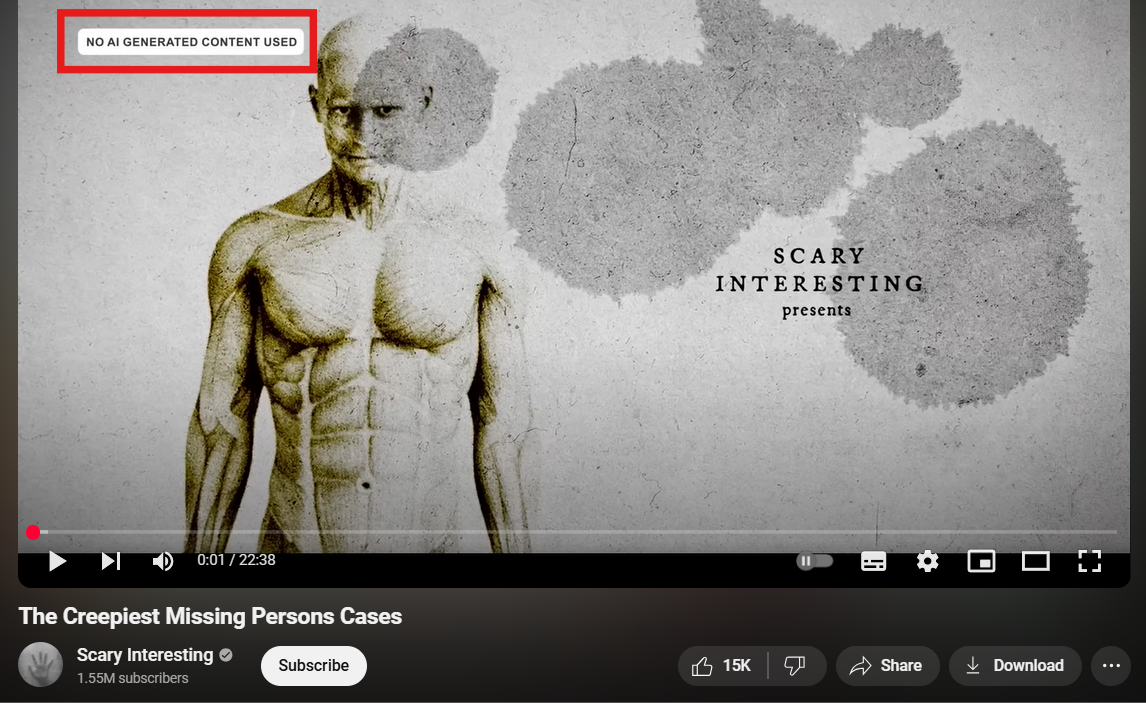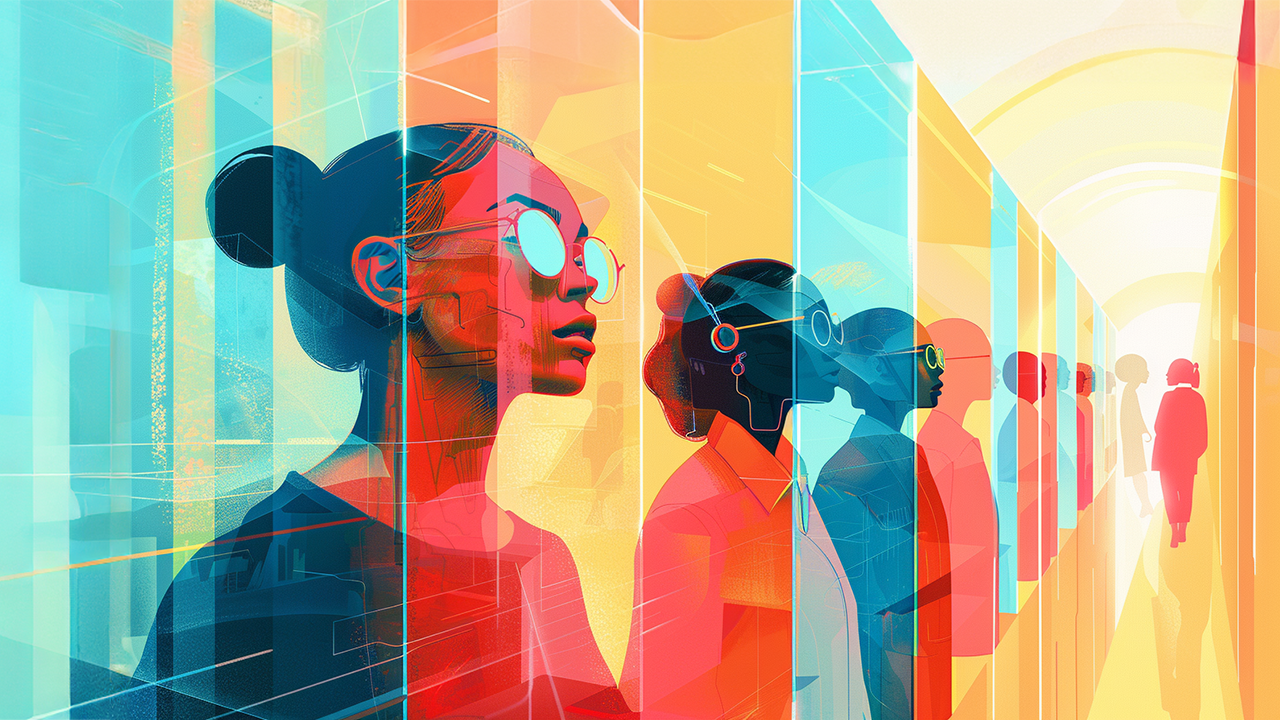Artificial Intelligence of AI...
At this point, it needs no introduction.
And if you haven’t heard of it, we assume you just woke up from a multiple-year coma and hope your sleep was restful.
AI-generated content is everywhere, and not everyone agrees this is a good thing.
So, what’s the big deal anyway?
AI or Artificial Intelligence has revolutionized content creation, enabling the rapid production of text, images, and videos.
While this tech offers many benefits, it has also raised concerns about authenticity, originality, and the potential replacement of creative jobs.
So if you want to know where AI is heading, it’s important to at least understand AI content creation– and how to recognize it when it’s being used on you.
- The Use (and Misuse) of AI in Content Creation
- AI and The Dead Internet Theory
- Where is AI Headed? Replacement or Enhancement?
- Controversies Surrounding AI in Creative Industries
- The Blowback Against AI is Growing
- How to Detect AI-Generated Content?
- How To Tell if Text is AI-Generated?
- Apps and Tools
- Spotting AI-Generated Images and Graphics
- How to Avoid Negative Reactions to AI Content in Your Marketing
The Use (and Misuse) of AI in Content Creation
While AI streamlines content creation and makes some jobs easier, it has also been the cause of several ongoing issues:
- Blogspam: AI can generate large volumes of low-quality content (also referred to as AI slop), cluttering the internet and lowering the overall quality of genuine information.
- Social Media Manipulation: AI-generated profiles and posts spread misinformation, influence public opinion, and even impersonate individuals, leading to worrying ethical concerns.
- Propaganda: AI's ability to produce content rapidly also makes it a tool for disseminating biased or false information on a large scale.
Simply put, AI can (and has) given information that's clearly wrong...

..or straight up dangerous to say the least!

The responses you have seen currently come from Google’s rush to be an AI pioneer. With their initial launch of integrated AI into Google search results went viral– for all the wrong reasons
But things are changing for the better.
Meta Platforms has announced measures to combat false content and deepfakes ahead of elections, highlighting the challenges posed by AI in spreading misinformation.
However, there’s a dearth of evidence that these actions have been effective.
AI and The Dead Internet Theory
The widespread proliferation of AI-generated content has also lent weight to something called “Dead Internet Theory.”
This conspiracy-theory-sounding hypothesis argues that the internet is now so overwhelmingly dominated by bots and automatically-generated content, that for all intents and purposes, you are no longer interacting with other real people when you go online, but are instead being manipulated by sophisticated algorithms.
While it sounds crazy, this is an idea that has supposedly worried even the likes of Google and YouTube, and they take this threat very seriously.
On the other hand, Meta didn’t think it was a big deal and announced AI-generated user profiles on Facebook and Instagram for people to interact with.
The response was less than positive, and Meta pulled the plug on this program quickly.
Reputable outlets like The Guardian and The Conversation also had a go at understanding the Dead Internet Theory and where AI stands (and gains) in all of this.
Where is AI Headed? Replacement or Enhancement?
There is an ongoing debate over whether AI will replace creative professionals, or simply make their jobs easier and faster.
Here are the main points summed up:
- Replacement: Many fear that AI could render artists, writers, and coders obsolete, leading to massive job losses.
- Augmentation: Others believe that as disruptive as it is, AI is still just another tool, enhancing human creativity by handling tedious repetitive tasks and making it easier to ideate and brainstorm creatively. There is some research that indicates that AI will not only augment existing jobs but also create new roles in emerging fields (source).
- The Hybrid Idea: A more balanced view suggests a synergy between AI and human creativity, where AI handles mundane work, allowing humans to focus on innovation and imagination with less distraction. This collaboration can lead to unprecedented creative achievements– for example, when it comes to AI in the animation industry, scientific applications, graphic arts, commercial music, and various similar fields.
Controversies Surrounding AI in Creative Industries
However, it’s not that simple. The introduction of AI into creative fields has sparked no small debate:
- Intellectual Property Concerns: Artists and creators are alarmed about AI models using their work without consent, potentially infringing on copyrights. Notably, hundreds of Hollywood figures have urged governments to uphold and/or update intellectual property laws against AI companies seeking to use copyrighted works without permission (source).
- Economic Impact: There is fear that AI could render certain creative jobs obsolete, leading to unemployment and a devaluation of human artistry. A common question in creative fields today is “Will AI take over art?” and there’s no consensus so far.
- Authenticity and Value: The proliferation of AI-generated art challenges traditional notions of creativity and the value placed on human-generated works.
The Blowback Against AI is Growing
While AI has been heavily marketed as some kind of magical do-everything tool that will usher in some sci-fi-like high-tech future, the response to AI hasn’t been universally welcoming.
Like any disruptive technology, it’s got its fair share of critics and detractors.
Briefly, they include:
- When it comes to AI in video production, some YouTube video creators have started listing a disclaimer that their videos contain no AI-generated content (see example below), and comments from viewers are universally appreciative in response.
- Memes now commonly circulate the internet and social media poking fun at the surreal, warped AI creations, as well as mocking self-proclaimed “AI artists/prompters.”
- Artists and creators (including Hollywood heavyweights) have been outspoken and critical of human-created artworks being fed into AI training without permission, let alone compensation, arguing that it’s tantamount to theft– and to be fair, they may have a point.
- As for the impact of AI on creativity, there have been apps and tools developed to help artists prevent their work from being used for AI training. Glaze and Nightshade, for example, insert invisible elements into digital artwork that purportedly confuses AI, should the art get scanned for training.
- Will AI take over art? The extent of the impact of AI on creativity is still unfolding, and the end results of AI and the future of art and AI vs human creativity, in general, remain to be seen as of right now.
Nowadays, if a content piece is made using AI, the platforms on which they are hosted will go ahead and tell you in clear terms.
A good example of this comes from this popular YouTube documentary channel, Scary Interesting (1.5 million subscribers), where their videos open with a disclaimer of “no AI-generated content used.” as you can see here.

Similarly, other brands are pushing for greater transparency to differentiate AI-generated content from genuine content.
How to Detect AI-Generated Content
So if you want to know how to check AI-generated content, there are a few ways:
1. How To Tell if Text is AI-Generated?
Recognizing AI-generated text becomes easier when you start noticing certain peculiar characteristics, including but not limited to:
- Language Patterns and Style: AI-generated content can feature unnatural phrasing, lack personal experiences, or present overly coherent or incoherent language (source).
- Consistency and Repetition: AI models might produce repetitive sentences or maintain a consistent, dull tone that lacks some of the subtle nuances typically found in human writing.
- A lack of typos: Especially in academia, teachers find that typos and grammatical errors in work submitted by students actually supports the likelihood that it was not AI-created.
2. Apps and Tools
Furthermore, there are several popular tools available to help you spot AI-generated writing being passed off as human-created work, including:
3. Spotting AI-Generated Images and Graphics
When it comes to art, if you want to know how to check if content is AI-generated, here are some things to look for:
- Bad Anatomy: AI-created images of people, at first glance, usually look perfect; but on closer inspection, odd elements become clear. Common complaints include extra fingers, unnatural looking hands, and strange-looking “dead-eyed” faces that trigger an uncanny valley effect.
- Unnatural Details: Images may contain inconsistencies such as asymmetrical features, unnatural lighting, or distorted backgrounds.
- Specific Look and Feel: AI-generated images often have a distinct appearance, with textures that are too smooth and “waxy,” and lighting or shadows that don't make sense on closer inspection.
- Detection Tools: There are tools designed to detect AI-generated images, though their accuracy varies.
With practice and regular exposure, this becomes easier to instinctively spot.
Remember that back in the day, when Photoshop fakes first began circulating the early internet, people (even novices) became adept at spotting manipulated images with practice.
It can be argued that the same applies to AI-generated images and content as well.
How to Avoid Negative Reactions to AI Content in Your Marketing
So how do you move forward with this powerful tool, without triggering a backlash for using it?
Like any tool, there are right and wrong ways to go about using it. Consider the following broad guidelines as a good place to start:
- Avoid Overuse of AI: The best uses of AI content seem to be a good blend of human and artificial, with a skilled human creator at the helm. Just because you can soak everything with AI, doesn’t mean it’s a good idea to do that everywhere and all the time. In many key ways, AI is simply not there yet, and it shows.
- Use an Honest Approach: People don’t seem to hate AI as much as they hate feeling deceived by content that pretends it’s human-generated when it is not. One way around this is to simply be transparent and disclose when and how much AI has been used.
- Be Discerning: Graphics and text in ads that are clearly AI-generated trigger a negative reaction with audiences, because it feels “cheap” as well as possibly dishonest. So quality still matters, whether AI generated or not!
- Use this Controversy as an Opportunity for Frank Discussion: When it comes to questions– like AI-generated art vs real art, will AI replace artists, what would be the full impact of AI on creativity, and so on– don’t shy away from your target audience’s questions, fears and criticisms. Embrace this as an opportunity to hear your customers and communicate frankly and honestly, and navigate a way forward as a business that shows you’re listening to them.
Conclusion
AI’s role in content creation is both transformative and contentious. It’s a situation that’s in constant flux; and so far, it remains to be seen how this will play out with the general public.
While it certainly offers tools that can enhance both productivity and creativity, it also presents challenges related to authenticity, employment, and ethical use.
But by honing skills to detect AI-generated content and engaging in thoughtful discourse on AI’s ultimate place in creative industries, maybe we can navigate these challenges, and harness AI’s full potential in ways that are ethical and responsible.






No Comments Yet
Let us know what you think